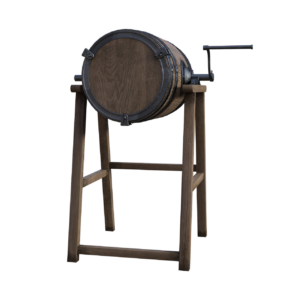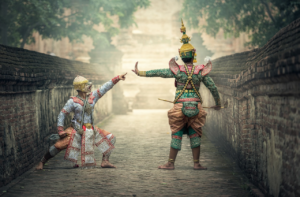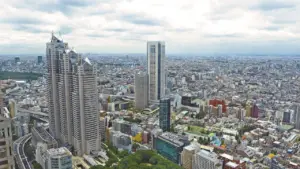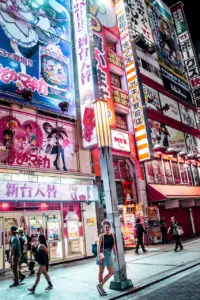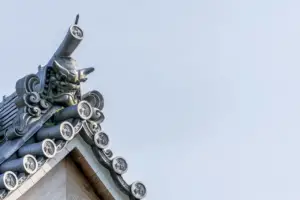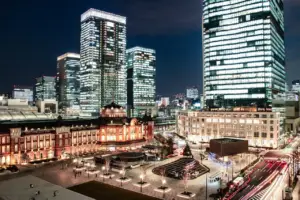Are you planning a trip to Okinawa and looking for some spiritual and cultural experiences? Look no further than the beautiful temples and shrines scattered throughout the islands. From ancient sites steeped in history to modern museums showcasing Okinawan traditions, there’s plenty to explore.
First on your list should be Shuri Castle, the former seat of power for the Ryukyu Kingdom. This UNESCO World Heritage Site boasts intricate architecture, stunning gardens, and a rich history dating back to the 15th century.
Next, visit Sefa Utaki, a sacred site believed to be the birthplace of the Ryukyu religion. Surrounded by lush forests and offering panoramic views of the ocean, this spiritual haven will leave you feeling rejuvenated and connected to nature.
Key Takeaways
- Okinawa boasts several important temples and shrines, including the UNESCO World Heritage Site Shuri Castle, the sacred site Sefa Utaki, the Tamaudun Mausoleum, and the Naminoue Shrine.
- These sites offer visitors a chance to learn about the rich history and culture of Okinawa, as well as to experience serene and peaceful surroundings.
- Shuri Castle is particularly noteworthy for its intricate architecture, stunning gardens, and museum exhibits showcasing the history and culture of the Ryukyu Kingdom.
- Other attractions in Okinawa include the Okinawa Rekio Museum, which showcases traditional costumes, religious artifacts, and musical instruments, and the Nago Pineapple Park, which offers a fun and educational experience for all ages.
Shuri Castle
If you’re headed to Okinawa, Shuri Castle should definitely be on your list of must-see spots! This beautiful castle was once the residence of the Ryukyu Kingdom’s royal family and is now a UNESCO World Heritage Site.
As soon as you enter the castle grounds, you’ll feel as though you’ve stepped back in time. The castle’s stunning red walls and intricate architectural details are sure to take your breath away. Inside the castle, you’ll find a museum with exhibits showcasing the history and culture of the Ryukyu Kingdom.
You can also take a tour of the castle’s various buildings and courtyards, each with its own unique charm. Whether you’re a history buff or simply appreciate beautiful architecture, Shuri Castle is a must-visit destination in Okinawa.
Sefa Utaki
You’ll feel a sense of awe and reverence as you step into the sacred grounds of Sefa Utaki. This UNESCO World Heritage Site is one of the most important spiritual places for the indigenous people of Okinawa, the Ryukyuans.
Located in Nanjo City, Sefa Utaki is a collection of rock formations and caves that have been worshipped as a sacred site for centuries. As you wander through the pathways of Sefa Utaki, you’ll come across various altars and shrines. The most prominent feature is the rock formation called ‘Uganju,’ which is said to represent the female principle of creation.
The site is surrounded by lush greenery and a serene atmosphere, making it the perfect place for meditation and reflection. Sefa Utaki is a must-visit for those seeking a deeper understanding of Okinawan spirituality and culture.
Tamaudun Mausoleum
To truly understand the history of the Ryukyu Kingdom, don’t miss out on visiting the Tamaudun Mausoleum. Here are four reasons why you should add this beautiful shrine to your itinerary:
-
The Tamaudun Mausoleum is a UNESCO World Heritage Site, recognized for its historical significance and cultural value.
-
The mausoleum was built in the 16th century and served as the final resting place for the Ryukyu Kingdom’s royal families for over 200 years.
-
The architecture of the mausoleum is a blend of Chinese and Okinawan styles, with intricate carvings and decorations that showcase the craftsmanship of the time.
-
The Tamaudun Mausoleum is located in Naha, the capital city of Okinawa, making it easily accessible for visitors who want to learn more about the island’s rich history and culture.
As you explore the Tamaudun Mausoleum, you’ll be transported back in time to the days of the Ryukyu Kingdom. The peaceful atmosphere and stunning architecture make it a must-visit destination for anyone interested in history, culture, and art. Don’t forget to take a moment to pay your respects to the royal families who are buried there, and appreciate the beauty and significance of this incredible shrine.
Naminoue Shrine
When exploring Naha, don’t miss out on visiting Naminoue Shrine, where you can experience the spiritual significance and cultural traditions of the Okinawan people.
This beautiful shrine, located on a hill overlooking the sea, is dedicated to the goddess of the sea, who is believed to protect the fishermen of Okinawa.
As you walk up the steps to the shrine, you’ll be surrounded by lush greenery and the sounds of the ocean, creating a serene and peaceful atmosphere.
Once inside the shrine, you’ll be struck by the intricate architecture and design.
The vermilion-colored shrine building is adorned with gold accents and features a large torii gate, which serves as the gateway between the human world and the world of the gods.
Visitors can make offerings at the altar and pray for good fortune and protection, or simply take in the beauty of the surroundings and reflect on the spiritual significance of the shrine.
A visit to Naminoue Shrine is a must for anyone interested in learning more about Okinawan culture and spirituality.
Futenma Shrine
Located in Ginowan City, Futenma Shrine is a historic site that holds cultural and spiritual significance for the people of Okinawa. As you approach the entrance, you’ll notice the striking red gate and the stone stairs that lead up to the main shrine.
The shrine is dedicated to the god of the sea, and its location near the coast makes it a popular destination for fishermen and sailors. Once you reach the top of the stairs, you’ll be greeted by a peaceful and serene atmosphere.
The shrine’s architecture is simple yet elegant, with a thatched roof and wooden pillars. The main attraction is the large stone torii gate, which stands proudly in front of the shrine.
Visitors can write their wishes on small wooden plaques called ema, and tie them to a nearby tree. Whether you’re a believer or not, a visit to Futenma Shrine is a chance to experience the rich history and culture of Okinawa.
Okinawa Rekio Museum
The Okinawa Rekio Museum offers a fascinating glimpse into the unique history and culture of this island paradise. As you enter the museum, you’ll be greeted with a vast collection of artifacts, photographs, and exhibits that showcase the rich cultural heritage of Okinawa.
From traditional costumes and tools to religious artifacts and musical instruments, the museum has something for everyone. One of the most impressive exhibits in the museum is the collection of Ryukyu Kingdom artifacts. Here, you can see the treasures of the royal family, including the exquisite Shureimon Gate, which was designated as a UNESCO World Heritage Site.
The museum also has a section dedicated to the Battle of Okinawa, where you can learn about the devastating impact of the war on the island’s people. With its impressive collection and engaging exhibits, the Okinawa Rekio Museum is a must-visit destination for anyone interested in the fascinating history and culture of this beautiful island.
Nago Pineapple Park
Get ready to indulge in juicy pineapples and experience a fun-filled day at Nago Pineapple Park!
This park is a must-visit destination when you’re in Okinawa. You’ll be greeted by the park’s cheerful mascot, Pineapple-kun, who will guide you through the various exhibits and activities.
One of the highlights of the park is the Pineapple Factory, where you can see how pineapples are grown and processed. You’ll also get to taste fresh pineapples, and even try your hand at making pineapple juice.
The park also offers a Pineapple Cutting Experience, where you can learn how to cut a pineapple like a pro. Don’t forget to check out the Pineapple Gift Shop, where you can buy all sorts of pineapple-themed souvenirs and treats.
Nago Pineapple Park is a fun and educational experience for all ages, and a perfect way to spend a sunny day in Okinawa.
Frequently Asked Questions
What is the significance of the architecture of Shuri Castle and how does it differ from other castles in Okinawa?
Shuri Castle, located in Naha, Okinawa, is significant for its unique architecture and history. It differs from other castles in Okinawa due to its use of Ryukyuan architecture, which is a blend of Chinese and Japanese architectural styles.
The castle was the seat of power for the Ryukyu Kingdom and served as the residence for the royal family. The castle was destroyed during World War II but has since been restored to its former glory.
The main hall, Seiden, is the most notable feature of the castle with its vibrant red exterior and ornate decorations. The architecture showcases the cultural and historical significance of Okinawa, making it a must-see destination for anyone interested in the history and heritage of the island.
Are there any specific rituals or customs associated with visiting Sefa Utaki?
When visiting Sefa Utaki, there are a few customs and rituals that you should be aware of. First and foremost, it’s important to show respect for the sacred site by dressing appropriately and refraining from talking loudly or behaving disrespectfully.
Many visitors also choose to perform a purification ritual before entering the shrine, which involves washing your hands and mouth at a small fountain or basin.
Once inside, it’s traditional to make an offering of coins or paper money at the altar, and to offer a prayer or wish for good fortune.
Some visitors also choose to participate in a guided meditation or prayer session, which can help to deepen their spiritual connection to the site.
Overall, a visit to Sefa Utaki can be a powerful and transformative experience, but it’s important to approach the shrine with a spirit of reverence and respect.
Can visitors explore the interior of Tamaudun Mausoleum and what is its historical significance?
Yes, visitors can explore the interior of Tamaudun Mausoleum. This UNESCO World Heritage site was once the royal mausoleum of the Ryukyu Kingdom and is home to the tombs of three generations of Ryukyu kings.
The mausoleum complex consists of three buildings, the haiden (worship hall), heiden (offering hall), and the main mausoleum. Inside the mausoleum, you can see the beautifully crafted wooden coffins of the royal family members. Each coffin is adorned with intricate carvings and decorations.
It is a fascinating glimpse into the history and culture of Okinawa and a must-visit for anyone interested in the island’s rich heritage.
What is the history behind the construction of Naminoue Shrine and what are some of its unique features?
Naminoue Shrine, located in Naha, Okinawa, has a rich history dating back to the 14th century. Legend has it that the shrine was built by a prince who washed ashore after a storm and was saved by a dragon god.
The shrine’s unique feature is its location on a cliff overlooking the ocean, offering stunning views and a peaceful atmosphere. Visitors can also see the large torii gate, made of Ryukyu limestone, which is one of the largest in Japan.
The shrine is dedicated to the sea goddess and is popular among locals for fertility and good luck. It’s a must-visit spot for those interested in exploring the cultural and spiritual side of Okinawa.
How does Futenma Shrine differ from other shrines in Okinawa and what are some notable events or festivals held there?
If you’re looking for a shrine that stands out from the rest in Okinawa, Futenma Shrine is definitely worth a visit. Unlike other shrines in the area, Futenma Shrine is dedicated to the god of wind and is known for its unique wind-chime shaped gate.
This shrine is especially lively during its annual wind festival in May, where visitors can see traditional dances, music performances, and even kite flying competitions. Additionally, Futenma Shrine also holds a popular New Year’s event where visitors can purchase lucky charms and take part in the first shrine visit of the year.
Overall, Futenma Shrine is a must-see destination in Okinawa for anyone interested in experiencing the local culture and traditions.
Conclusion
Congratulations! You’ve just explored 7 of the most beautiful temples and shrines in Okinawa. From the majestic Shuri Castle to the tranquil Sefa Utaki, these sacred places offer not only a glimpse into Okinawa’s rich cultural heritage, but also a chance to reflect and find inner peace.
As you stood in awe of the intricate architecture and stunning surroundings, you’ve learned about the fascinating history and traditions of Okinawa. You’ve also witnessed the locals’ deep reverence for these holy sites, and perhaps even took part in some of their rituals and ceremonies.
Whether you’re a history buff, a spiritual seeker, or simply a traveler in search of beauty and inspiration, Okinawa’s temples and shrines have something to offer for everyone.
So, as you leave Okinawa with a newfound appreciation for its cultural treasures, remember to carry their lessons with you. May the peaceful energy and timeless wisdom of these sacred places guide you on your journey, wherever it may lead you.
And who knows, perhaps one day you’ll return to Okinawa, ready to explore more of its hidden gems and uncover the secrets of its ancient past. Safe travels!

















